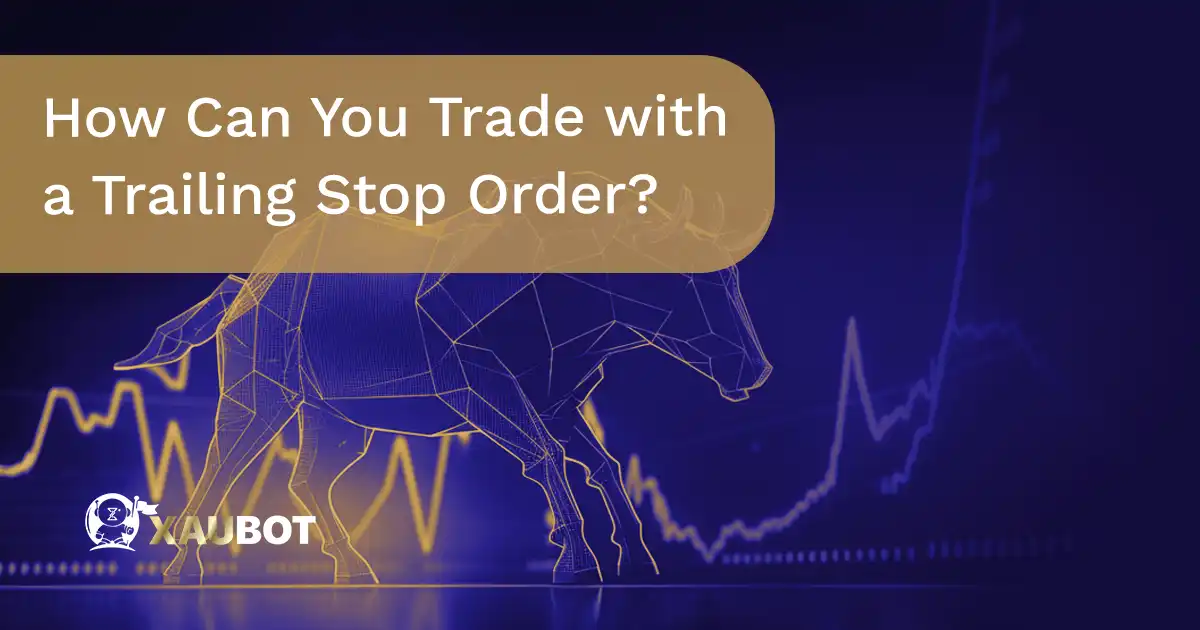Here we get to yet another group of orders in financial markets. This time, it is the trailing stop order.
It is obviously part of the stop orders. There are various types of the stop order that are quite useful and practical for traders in the foreign exchange market and others. In its basic and generic form, a stop order is what its name reveals – i.e. it is an order that directs the broker to stop the position and close it.
But that is only a simple and fundamental definition of a stop order. As was mentioned there are other types of stop orders such as the trailing stop order. And this is exactly what we are going to discuss in this article.
What Is the Definition of a Trailing Stop Order?
To understand the trailing stop order, you first need to understand the main root of this order – the stop order itself. As was mentioned at the beginning of the article, a stop order is merely an order or directive sent to the broker specifying if and when the position ought to be closed.
A trailing stop order is a different version or an extension of the simple stop order. According to the trailing stop order you can place a simple stop order that is not fixed and in fact it is dynamic and can follow the direction of the price movement.
This means you can choose an amount or a percentage, most often a percentage, below the currency market price or the highest high recorded recently. Then you can place that distance as the dynamic stop order or trailing stop order for your position. This means for instance, if the price goes up, your stop order will not remain low. It will go up with the price in the same direction. Meanwhile it will keep the same distance from the price, already set by the trader.
So in simple terms, you can consider a trailing stop order as the dynamic version of the stop order. For this purpose, if you are in a long position, the trailing stop order would naturally be placed below the market price. However, if your position is short one, then the trailing stop order ought to be placed higher than the currency market price. Naturally, as a move to protect your assets against falling prices.
Traders can choose to place a trailing stop order when they first open a position or they can decide to place it after the position has been opened. In either case, the purpose of a trailing stop order is to provide the highest degree of safety and protection for your assets as long as you decide to keep a position open.
Remember, an open position is a potentially exposed position. So by placing this stop order that always trails behind the market price to ensure the safety of your asset, you can actually keep the position open for as long as it is necessary to obtain the most profits.
How Does the Trailing Stop Order Work?
First and foremost, the initial aspect of a trailing stop order that is specified by the trader is whether this stop order will be defined in terms of dollar amounts or percentage. For instance, you can choose to place a trailing stop order that is 15% below the market price or the highest high for your long position.
As previously discussed, a trailing stop order does not move against the price movement direction. This means if the direction of the price movement is reversed, either for a long position or a short position, your position would be closed by the broker.
So in the case of the 15% trailing stop order for the long position, if prices fall 15% or more compared to the price at which the position had been opened, then the position is closed. This is how a trader can make sure they do not lose more than what they had specified.
How Can You Trade with a Trailing Stop Order?

How Can You Trade with a Trailing Stop Order
The most difficult and challenging aspect of using this type of order with any position in any financial market is to specify how far the trial should be from the market price.
A wrong calculation in this regard can result in either heavily narrow profits and losing potential gains, or it can result in more than necessary risks and potentially sustaining heavy losses.
In any financial market, there is a natural and normal level fluctuation in prices. This is especially so in the case of the foreign exchange market. That’s right, in the forex market there are a lot of small ups and downs in the price of currency pairs.
So in these situations, if your trailing stop order is too tight, it can be set off by ordinary market movements and your position would be closed for no real reason and in the absence of any real threat to your assets.
Clearly, if the order is too wide, it would not be set off by threats in the market that are actual and real.
So it is quite necessary to use any means at your disposal, including technical and fundamental analysis, to calculate the right distance for your trailing stop order.
An Example of a Trailing Stop Order

An Example of a Trailing Stop Order
Suppose you purchase a certain number of Tesla shares at $260. Now in order to make sure you protect your position and your assets, you can set a trailing stop loss order for your shares.
To reiterate, you need to do all sorts of analysis possible in order to calculate the proper trail distance. Probably the most common trailing stop percentage is 10%.
So, in this situation when you place a 10% trailing stop loss order on your position for Tesla shares, the broker will fill a sell order if the price of shares falls to $234, which is exactly 10% lower than your initial price at which you purchased the shares.
This might seem like a normal stop loss order. But here is where the distinguishing feature of a trailing stop order comes into play.
The trailing feature means the stop order is dynamic. So a stop order at $234 for the market price of $260 will be set at $243 if the market price moves up to $270, which is again 10% lower than the market price.
This pattern will naturally keep going if the stop order is not triggered and it will always remain 10% lower than the market price for an extra layer of protection for your assets.
Conclusion
A trailing stop order is quite similar to a normal stop order with an added feature of being dynamic. This means that it is not fixed like, for instance, a normal stop loss order. Instead, you can choose a percentage for a stop order that will always trail behind or above the market price given your specific position.
